Make Up For Ever Gold & Coral Artist Color Shadows Reviews, Photos, Swatches
D410 Gold Nugget
Make Up For Ever D410 Gold Nugget Artist Color Shadow ($17.00 for 0.08 oz.) is a medium gold with warm, yellow undertones and a glittery, metallic finish. It had semi-sheer coverage that was somewhat buildable, but the texture was so dense that it ended up stiff and thick, which made it hard to pickup with a brush and a challenge to apply to the lid evenly. When I tried using fingertips to apply, so much product adhered to my fingertip but wouldn’t transfer onto my lid. It lasted for seven hours but had fallout.
The previous version was softer and more pigmented, though the colors were very similar (see side-by-side comparison).
FURTHER READING: Formula Overview for details on general performance and characteristics (like scent).
Top Dupes
- KVD Beauty Brass Knuckles (LE, ) is less shimmery, lighter (95% similar).
- Make Up For Ever ME406 Golden (DC, $21.00) is less shimmery (95% similar).
- Too Faced Twinkie (LE, $16.00) is less shimmery (95% similar).
- Burberry Gold Shimmer #2 (LE, ) is less shimmery (95% similar).
- MAC Born to Beam (P, $23.00) is less shimmery, darker (95% similar).
- Sydney Grace Bask (Deep) (PiP, $6.25) is more shimmery, warmer (90% similar).
- MAC Gilded Night #2 (LE, $21.00) is darker, brighter (90% similar).
- Viseart Buillion (GPV2 #12) (P, ) is more shimmery, darker (90% similar).
- Burberry Gold Shimmer #1 (LE, ) is lighter (90% similar).
- Tarte Sunset (LE, ) is less shimmery, lighter (90% similar).
Formula Overview
$17.00/0.08 oz. - $212.50 Per Ounce
The original Artist Shadow formula had a creamier, slightly softer, and thicker feel for finishes like Metallic, Iridescent, and Satin, while I felt the original Diamond finish was denser/thicker (heavier almost) and the Matte finish was more powdery but similar in softness and pigmentation (I did not find the original Mattes to be ultra pigmented across the board--semi-opaque to opaque, buildable, which you can see in my original swatches here). By and large, I found the formula to be easy to work with and did not have to spend a lot of time blending or fussing with the shades on the lid.
The new Matte formula has a smoother consistency that has more slip to the touch with less powderiness in the pan, but the pigmentation did seem slightly weaker on average compared to the original formula. The pigmentation of the new Matte formula was still semi-opaque to opaque and buildable but I felt like there were just more shades that were closer to semi-opaque than to opaque.
However, shades like M402 Mimosa showed improvement, as it used to be a Satin (see here) and not as easy to work with due to the denser texture. A lot of the shades were similar in color between the formulas, but there were a few that were not (M546 Dark Purple Taupe was a shade with more significant changes; the new version is warmer and lighter).
Overall, I did not have any issues applying most of the matte shades to the lid, blending them out, or building up coverage. They lasted between nine and ten hours on me, which was actually a bit longer (on average) compared to the original formula, where the mattes tended to wear between seven and eight hours on me (without primer).
The new Satin formula was the most different; it had weaker pigmentation, felt denser and drier with less give and creaminess. In practice, I did not feel like application was harder or noticeably different other than feeling like more of the shades required two layers for more opaque coverage, though some of the more neutral shades were fairly pigmented in a single layer. I also noticed that this particular finish seemed to be the most culled; there weren't that many shades in it, and I wonder if they did not sell well or something about the finish is harder to produce.
There were significant differences in color (and/or undertone) between shades in the new formula and old formula (with the same names) within this finish, too, where most were different rather than only a handful being different. The pigmentation of the new Satin formula was typically semi-opaque and buildable, while they applied evenly, blended out without much effort, and lasted between eight and ten hours (without primer).
The new Iridescent formula was the second most different and more comparable to the Satin finish in terms of overall feel and performance, just with larger shimmer/micro-sparkle. The new formula has a denser consistency (almost "drier" and with less slip) and didn't feel as cream-like, but the powder seemed to pickup better with most brushes and was more consistent in the actual finish--pearly with sparkle--whereas the original formula varied more heavily between pearly and metallic, sparkle and finer shimmer.
There were, however, more substantial color and undertone differences between old and new within this formula, like I saw with the Satin formula. Overall, I did not experience any significant issues applying most of the shades to the lid--they were semi-opaque to opaque, fairly buildable, blendable, and long-wearing (eight to ten hours).
The new Metallic formula was the most consistent between old and new for overall feel, performance, and color. There were, of course, a few shades that seemed lighter/darker, cooler/warmer compared to the previous versions, and all those notes will be made within the respective shade's review. I think the new Metallic finish has a more flattering look on the lid, as the consistency wasn't quite as thick, which should make it apply and appear smoother on the lid for more people.
There were several shades that seemed slightly deeper or less reflective, while others were as reflective as past versions. The majority of the shades of this finish were very pigmented with a moderately dense, lightly creamy texture that blended out well on the lid and wore between nine and ten hours on me.
The new Diamond finish was noticeably less dense/thick, particularly on the lid, which did make it easier to spread across a larger area and easier to pickup with more types of brushes. I was worried that there would be more fallout, but I haven't noticeable much fallout with the new Diamond shades over the eight to ten hours they last for.
Most of them had good pigmentation, though there were a few that were weaker (medium to semi-opaque coverage); a shade like D410 Gold Nugget was a weaker shade before and still is while D326 Lagoon Blue is significantly less pigmented in the new formula.
As I typically do with new eyeshadow formulas, I tested a few shades from each finish over various primers, as I like to see how new formulas interact with different types of primers and if there are any unexpected consequences of using primers (I felt that some of the more silicone-heavy Artist Shadows from before actually applied better without primer).
I didn't notice any ill effects of using primers like Smashbox 24-Hour, Marc Jacobs Coconut Eye Primer, Too Faced Shadow Insurance, or Urban Decay Primer Potion. They all seemed to just help with wear, and with some of the shades that felt drier or had weaker pigmentation, the use of primer seemed to improve initial coverage levels, too.
Browse all of our Make Up For Ever Artist Color Shadow swatches.
Ingredients
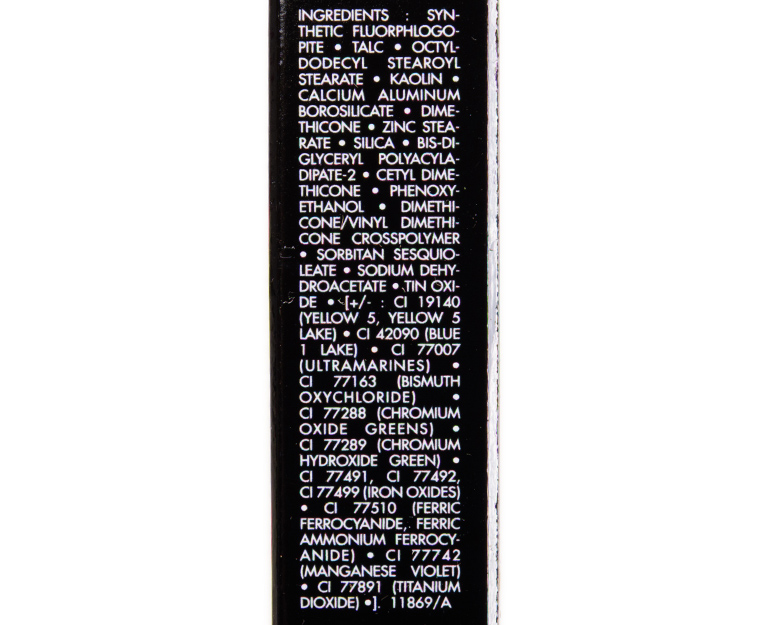
D410 Gold Nugget
PPermanent. $17.00.
S864 Baby Pink
Make Up For Ever S864 Baby Pink Artist Color Shadow ($17.00 for 0.08 oz.) is a medium pink with subtle, cool undertones and a pearly sheen. It had good color coverage in a single layer with a moderately dense, slightly firmer texture that was smooth to the touch but harder to pickup with a brush. I had best results by pushing at the surface with a flat, synthetic brush and then patting and pressing onto the lid. The eyeshadow stayed on well for eight and a half hours before fading on me.
The previous version was an iridescent finish, and it was significantly lighter and cooler in tone (see side-by-side comparison).
FURTHER READING: Formula Overview for details on general performance and characteristics (like scent).
Top Dupes
- Make Up For Ever S854 Candy Pink (DC, $21.00) is darker, brighter (90% similar).
- Make Up For Ever I858 Flamingo (DC, $21.00) is brighter (90% similar).
- Milani Bella Fuchsia (26) (P, $4.49) is more shimmery (90% similar).
- Too Faced Bubblegum (LE, $16.00) is warmer (90% similar).
- MAC Da Bling (DC, $17.00) is more shimmery, lighter (85% similar).
- Make Up For Ever I864 Baby Pink (DC, $21.00) is more shimmery, lighter, brighter (85% similar).
- Sephora Chant (PiP, ) is more shimmery, lighter, warmer (85% similar).
- Make Up For Ever I904 Cotton Candy (DC, $21.00) is more shimmery, lighter, cooler (85% similar).
- Le Metier de Beaute Gamine (LE, $30.00) is lighter (85% similar).
- MAC Swish (DC, $17.00) is more shimmery, lighter, brighter (80% similar).
Formula Overview
$17.00/0.08 oz. - $212.50 Per Ounce
The original Artist Shadow formula had a creamier, slightly softer, and thicker feel for finishes like Metallic, Iridescent, and Satin, while I felt the original Diamond finish was denser/thicker (heavier almost) and the Matte finish was more powdery but similar in softness and pigmentation (I did not find the original Mattes to be ultra pigmented across the board--semi-opaque to opaque, buildable, which you can see in my original swatches here). By and large, I found the formula to be easy to work with and did not have to spend a lot of time blending or fussing with the shades on the lid.
The new Matte formula has a smoother consistency that has more slip to the touch with less powderiness in the pan, but the pigmentation did seem slightly weaker on average compared to the original formula. The pigmentation of the new Matte formula was still semi-opaque to opaque and buildable but I felt like there were just more shades that were closer to semi-opaque than to opaque.
However, shades like M402 Mimosa showed improvement, as it used to be a Satin (see here) and not as easy to work with due to the denser texture. A lot of the shades were similar in color between the formulas, but there were a few that were not (M546 Dark Purple Taupe was a shade with more significant changes; the new version is warmer and lighter).
Overall, I did not have any issues applying most of the matte shades to the lid, blending them out, or building up coverage. They lasted between nine and ten hours on me, which was actually a bit longer (on average) compared to the original formula, where the mattes tended to wear between seven and eight hours on me (without primer).
The new Satin formula was the most different; it had weaker pigmentation, felt denser and drier with less give and creaminess. In practice, I did not feel like application was harder or noticeably different other than feeling like more of the shades required two layers for more opaque coverage, though some of the more neutral shades were fairly pigmented in a single layer. I also noticed that this particular finish seemed to be the most culled; there weren't that many shades in it, and I wonder if they did not sell well or something about the finish is harder to produce.
There were significant differences in color (and/or undertone) between shades in the new formula and old formula (with the same names) within this finish, too, where most were different rather than only a handful being different. The pigmentation of the new Satin formula was typically semi-opaque and buildable, while they applied evenly, blended out without much effort, and lasted between eight and ten hours (without primer).
The new Iridescent formula was the second most different and more comparable to the Satin finish in terms of overall feel and performance, just with larger shimmer/micro-sparkle. The new formula has a denser consistency (almost "drier" and with less slip) and didn't feel as cream-like, but the powder seemed to pickup better with most brushes and was more consistent in the actual finish--pearly with sparkle--whereas the original formula varied more heavily between pearly and metallic, sparkle and finer shimmer.
There were, however, more substantial color and undertone differences between old and new within this formula, like I saw with the Satin formula. Overall, I did not experience any significant issues applying most of the shades to the lid--they were semi-opaque to opaque, fairly buildable, blendable, and long-wearing (eight to ten hours).
The new Metallic formula was the most consistent between old and new for overall feel, performance, and color. There were, of course, a few shades that seemed lighter/darker, cooler/warmer compared to the previous versions, and all those notes will be made within the respective shade's review. I think the new Metallic finish has a more flattering look on the lid, as the consistency wasn't quite as thick, which should make it apply and appear smoother on the lid for more people.
There were several shades that seemed slightly deeper or less reflective, while others were as reflective as past versions. The majority of the shades of this finish were very pigmented with a moderately dense, lightly creamy texture that blended out well on the lid and wore between nine and ten hours on me.
The new Diamond finish was noticeably less dense/thick, particularly on the lid, which did make it easier to spread across a larger area and easier to pickup with more types of brushes. I was worried that there would be more fallout, but I haven't noticeable much fallout with the new Diamond shades over the eight to ten hours they last for.
Most of them had good pigmentation, though there were a few that were weaker (medium to semi-opaque coverage); a shade like D410 Gold Nugget was a weaker shade before and still is while D326 Lagoon Blue is significantly less pigmented in the new formula.
As I typically do with new eyeshadow formulas, I tested a few shades from each finish over various primers, as I like to see how new formulas interact with different types of primers and if there are any unexpected consequences of using primers (I felt that some of the more silicone-heavy Artist Shadows from before actually applied better without primer).
I didn't notice any ill effects of using primers like Smashbox 24-Hour, Marc Jacobs Coconut Eye Primer, Too Faced Shadow Insurance, or Urban Decay Primer Potion. They all seemed to just help with wear, and with some of the shades that felt drier or had weaker pigmentation, the use of primer seemed to improve initial coverage levels, too.
Browse all of our Make Up For Ever Artist Color Shadow swatches.
Ingredients
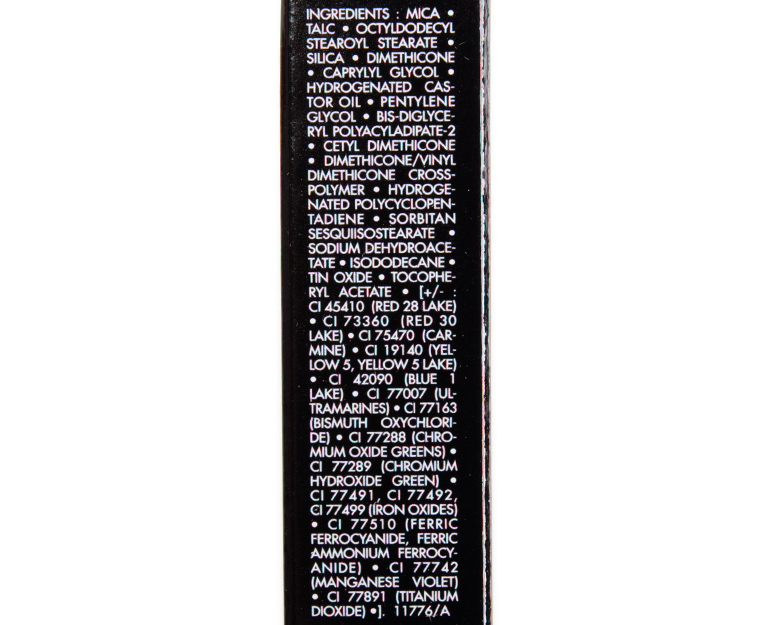
S864 Baby Pink
PPermanent. $17.00.
I746 Watermelon
Make Up For Ever I746 Watermelon Artist Color Shadow ($17.00 for 0.08 oz.) is a medium-dark, pinky-coral with a satin sheen. It had good color payoff with a smooth, fairly dense texture that took a heavier hand and a stiffer brush to work with (I push at the product to get it onto my brush rather than sweep). It applied fairly well to bare skin and lasted for nine hours on me, but I wish it was softer and more yielding in the pan.
The color was much pinker and less intense compared to the previous version (see side-by-side comparison).
As far as I can tell, there are still shades within the Artist Color Shadow range that aren’t listed as eye safe (in the U.S.), though this information appears in the form of a “face” symbol on the underside of the physical shadow (as opposed to an “eye” symbol). This same type of symbol system was used on their loose and liquid Star Lit products, and if they were appropriate for multiple areas, the label included multiple symbols (like an eye, face, and set of lips). This shade did not have an eye symbol on its label.
FURTHER READING: Formula Overview for details on general performance and characteristics (like scent).
Top Dupes
- ColourPop Pebbles (DC, $4.50) is darker (90% similar).
- ColourPop Lomo (LE, $4.50) is less shimmery, darker, cooler (90% similar).
- ColourPop Strawberry Jelly (P, $9.00) is more shimmery, darker, cooler (90% similar).
- Make Up For Ever I802 Coral Pink (DC, $21.00) is more shimmery, lighter (90% similar).
- ColourPop Blitzen (LE, $6.00) is more shimmery, darker, cooler (90% similar).
- Urban Decay Seize (LE, $19.00) is darker (90% similar).
- Huda Beauty Ruby #7 (LE, ) is less shimmery, darker, cooler (90% similar).
- Tom Ford Beauty Rose Cashmere #2 (LE, ) is less shimmery, lighter, cooler (85% similar).
- Too Faced Jardin (PiP, $16.00) is lighter (85% similar).
- Sephora Cotton Candy (342) (P, $9.00) is lighter (85% similar).
Formula Overview
$17.00/0.08 oz. - $212.50 Per Ounce
The original Artist Shadow formula had a creamier, slightly softer, and thicker feel for finishes like Metallic, Iridescent, and Satin, while I felt the original Diamond finish was denser/thicker (heavier almost) and the Matte finish was more powdery but similar in softness and pigmentation (I did not find the original Mattes to be ultra pigmented across the board--semi-opaque to opaque, buildable, which you can see in my original swatches here). By and large, I found the formula to be easy to work with and did not have to spend a lot of time blending or fussing with the shades on the lid.
The new Matte formula has a smoother consistency that has more slip to the touch with less powderiness in the pan, but the pigmentation did seem slightly weaker on average compared to the original formula. The pigmentation of the new Matte formula was still semi-opaque to opaque and buildable but I felt like there were just more shades that were closer to semi-opaque than to opaque.
However, shades like M402 Mimosa showed improvement, as it used to be a Satin (see here) and not as easy to work with due to the denser texture. A lot of the shades were similar in color between the formulas, but there were a few that were not (M546 Dark Purple Taupe was a shade with more significant changes; the new version is warmer and lighter).
Overall, I did not have any issues applying most of the matte shades to the lid, blending them out, or building up coverage. They lasted between nine and ten hours on me, which was actually a bit longer (on average) compared to the original formula, where the mattes tended to wear between seven and eight hours on me (without primer).
The new Satin formula was the most different; it had weaker pigmentation, felt denser and drier with less give and creaminess. In practice, I did not feel like application was harder or noticeably different other than feeling like more of the shades required two layers for more opaque coverage, though some of the more neutral shades were fairly pigmented in a single layer. I also noticed that this particular finish seemed to be the most culled; there weren't that many shades in it, and I wonder if they did not sell well or something about the finish is harder to produce.
There were significant differences in color (and/or undertone) between shades in the new formula and old formula (with the same names) within this finish, too, where most were different rather than only a handful being different. The pigmentation of the new Satin formula was typically semi-opaque and buildable, while they applied evenly, blended out without much effort, and lasted between eight and ten hours (without primer).
The new Iridescent formula was the second most different and more comparable to the Satin finish in terms of overall feel and performance, just with larger shimmer/micro-sparkle. The new formula has a denser consistency (almost "drier" and with less slip) and didn't feel as cream-like, but the powder seemed to pickup better with most brushes and was more consistent in the actual finish--pearly with sparkle--whereas the original formula varied more heavily between pearly and metallic, sparkle and finer shimmer.
There were, however, more substantial color and undertone differences between old and new within this formula, like I saw with the Satin formula. Overall, I did not experience any significant issues applying most of the shades to the lid--they were semi-opaque to opaque, fairly buildable, blendable, and long-wearing (eight to ten hours).
The new Metallic formula was the most consistent between old and new for overall feel, performance, and color. There were, of course, a few shades that seemed lighter/darker, cooler/warmer compared to the previous versions, and all those notes will be made within the respective shade's review. I think the new Metallic finish has a more flattering look on the lid, as the consistency wasn't quite as thick, which should make it apply and appear smoother on the lid for more people.
There were several shades that seemed slightly deeper or less reflective, while others were as reflective as past versions. The majority of the shades of this finish were very pigmented with a moderately dense, lightly creamy texture that blended out well on the lid and wore between nine and ten hours on me.
The new Diamond finish was noticeably less dense/thick, particularly on the lid, which did make it easier to spread across a larger area and easier to pickup with more types of brushes. I was worried that there would be more fallout, but I haven't noticeable much fallout with the new Diamond shades over the eight to ten hours they last for.
Most of them had good pigmentation, though there were a few that were weaker (medium to semi-opaque coverage); a shade like D410 Gold Nugget was a weaker shade before and still is while D326 Lagoon Blue is significantly less pigmented in the new formula.
As I typically do with new eyeshadow formulas, I tested a few shades from each finish over various primers, as I like to see how new formulas interact with different types of primers and if there are any unexpected consequences of using primers (I felt that some of the more silicone-heavy Artist Shadows from before actually applied better without primer).
I didn't notice any ill effects of using primers like Smashbox 24-Hour, Marc Jacobs Coconut Eye Primer, Too Faced Shadow Insurance, or Urban Decay Primer Potion. They all seemed to just help with wear, and with some of the shades that felt drier or had weaker pigmentation, the use of primer seemed to improve initial coverage levels, too.
Browse all of our Make Up For Ever Artist Color Shadow swatches.
Ingredients
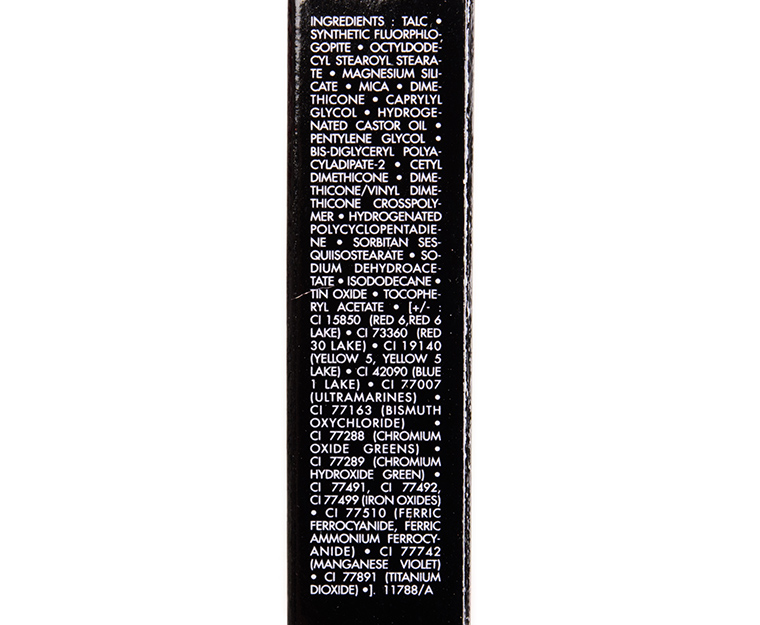
I746 Watermelon
DCDiscontinued. $17.00.
ME734 Tangerine
Make Up For Ever ME734 Tangerine Artist Color Shadow ($17.00 for 0.08 oz.) is a bright, medium orange with warm, reddish undertones and a golden sheen. The texture was smooth, dense but not too firm, and blendable on my skin. It had rich pigmentation that maintained its intensity over nine and a half hours of wear.
It was very similar to the previous version, just slightly darker (see side-by-side comparison).
As far as I can tell, there are still shades within the Artist Color Shadow range that aren’t listed as eye safe (in the U.S.), though this information appears in the form of a “face” symbol on the underside of the physical shadow (as opposed to an “eye” symbol). This same type of symbol system was used on their loose and liquid Star Lit products, and if they were appropriate for multiple areas, the label included multiple symbols (like an eye, face, and set of lips). This shade did not have an eye symbol on its label.
FURTHER READING: Formula Overview for details on general performance and characteristics (like scent).
Top Dupes
- Morphe Sauce (PiP, ) is less shimmery, darker (95% similar).
- Make Up For Ever ME734 Tangerine (DC, $21.00) is less shimmery (95% similar).
- JD Glow Carrot Top (P, $7.50) is more shimmery, lighter (95% similar).
- ColourPop The Aries (P, $4.50) is more muted (95% similar).
- Sydney Grace Orange Slush (P, $6.25) is more shimmery (95% similar).
- Melt Cosmetics Know-It-All (LE, ) is cooler (95% similar).
- Sydney Grace Marmalade (DC, $6.25) is darker, cooler (90% similar).
- Anastasia D4 (Norvina Vol. 3) (LE, ) is less shimmery, cooler (90% similar).
- Dior Volcanic #3 (LE, ) is less shimmery, more muted (90% similar).
- Melt Cosmetics Mariposa (LE, ) is less shimmery, lighter (90% similar).
Formula Overview
$17.00/0.08 oz. - $212.50 Per Ounce
The original Artist Shadow formula had a creamier, slightly softer, and thicker feel for finishes like Metallic, Iridescent, and Satin, while I felt the original Diamond finish was denser/thicker (heavier almost) and the Matte finish was more powdery but similar in softness and pigmentation (I did not find the original Mattes to be ultra pigmented across the board--semi-opaque to opaque, buildable, which you can see in my original swatches here). By and large, I found the formula to be easy to work with and did not have to spend a lot of time blending or fussing with the shades on the lid.
The new Matte formula has a smoother consistency that has more slip to the touch with less powderiness in the pan, but the pigmentation did seem slightly weaker on average compared to the original formula. The pigmentation of the new Matte formula was still semi-opaque to opaque and buildable but I felt like there were just more shades that were closer to semi-opaque than to opaque.
However, shades like M402 Mimosa showed improvement, as it used to be a Satin (see here) and not as easy to work with due to the denser texture. A lot of the shades were similar in color between the formulas, but there were a few that were not (M546 Dark Purple Taupe was a shade with more significant changes; the new version is warmer and lighter).
Overall, I did not have any issues applying most of the matte shades to the lid, blending them out, or building up coverage. They lasted between nine and ten hours on me, which was actually a bit longer (on average) compared to the original formula, where the mattes tended to wear between seven and eight hours on me (without primer).
The new Satin formula was the most different; it had weaker pigmentation, felt denser and drier with less give and creaminess. In practice, I did not feel like application was harder or noticeably different other than feeling like more of the shades required two layers for more opaque coverage, though some of the more neutral shades were fairly pigmented in a single layer. I also noticed that this particular finish seemed to be the most culled; there weren't that many shades in it, and I wonder if they did not sell well or something about the finish is harder to produce.
There were significant differences in color (and/or undertone) between shades in the new formula and old formula (with the same names) within this finish, too, where most were different rather than only a handful being different. The pigmentation of the new Satin formula was typically semi-opaque and buildable, while they applied evenly, blended out without much effort, and lasted between eight and ten hours (without primer).
The new Iridescent formula was the second most different and more comparable to the Satin finish in terms of overall feel and performance, just with larger shimmer/micro-sparkle. The new formula has a denser consistency (almost "drier" and with less slip) and didn't feel as cream-like, but the powder seemed to pickup better with most brushes and was more consistent in the actual finish--pearly with sparkle--whereas the original formula varied more heavily between pearly and metallic, sparkle and finer shimmer.
There were, however, more substantial color and undertone differences between old and new within this formula, like I saw with the Satin formula. Overall, I did not experience any significant issues applying most of the shades to the lid--they were semi-opaque to opaque, fairly buildable, blendable, and long-wearing (eight to ten hours).
The new Metallic formula was the most consistent between old and new for overall feel, performance, and color. There were, of course, a few shades that seemed lighter/darker, cooler/warmer compared to the previous versions, and all those notes will be made within the respective shade's review. I think the new Metallic finish has a more flattering look on the lid, as the consistency wasn't quite as thick, which should make it apply and appear smoother on the lid for more people.
There were several shades that seemed slightly deeper or less reflective, while others were as reflective as past versions. The majority of the shades of this finish were very pigmented with a moderately dense, lightly creamy texture that blended out well on the lid and wore between nine and ten hours on me.
The new Diamond finish was noticeably less dense/thick, particularly on the lid, which did make it easier to spread across a larger area and easier to pickup with more types of brushes. I was worried that there would be more fallout, but I haven't noticeable much fallout with the new Diamond shades over the eight to ten hours they last for.
Most of them had good pigmentation, though there were a few that were weaker (medium to semi-opaque coverage); a shade like D410 Gold Nugget was a weaker shade before and still is while D326 Lagoon Blue is significantly less pigmented in the new formula.
As I typically do with new eyeshadow formulas, I tested a few shades from each finish over various primers, as I like to see how new formulas interact with different types of primers and if there are any unexpected consequences of using primers (I felt that some of the more silicone-heavy Artist Shadows from before actually applied better without primer).
I didn't notice any ill effects of using primers like Smashbox 24-Hour, Marc Jacobs Coconut Eye Primer, Too Faced Shadow Insurance, or Urban Decay Primer Potion. They all seemed to just help with wear, and with some of the shades that felt drier or had weaker pigmentation, the use of primer seemed to improve initial coverage levels, too.
Browse all of our Make Up For Ever Artist Color Shadow swatches.
Ingredients
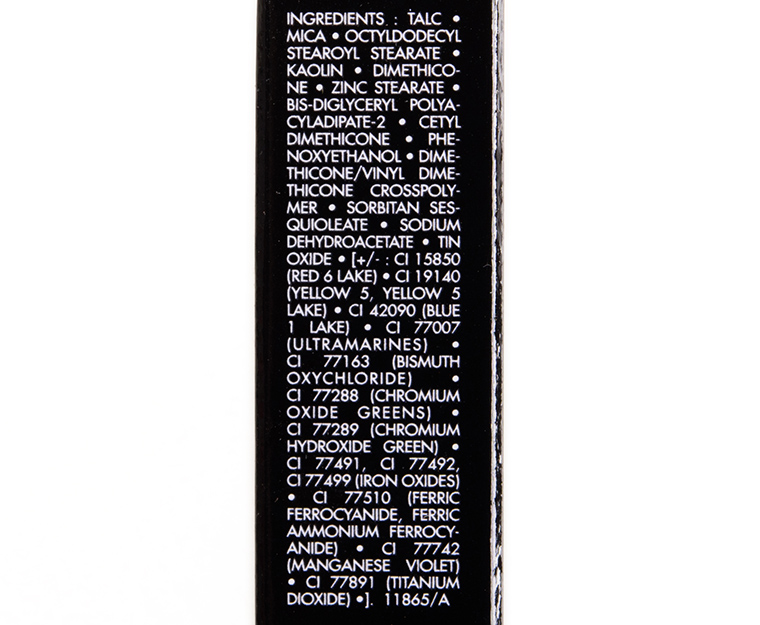
ME734 Tangerine
PPermanent. $17.00.
M748 Coral
Make Up For Ever M748 Coral Artist Color Shadow ($17.00 for 0.08 oz.) is a rich, medium-dark pink-coral with a matte finish. The color payoff was fantastic, while the texture was smooth and silky without being powdery as there was some substance to the powder. It applied evenly and blended out easily on my lid. It wore well for nine and a half hours before fading slightly.
The previous version was a satin, so it was shimmery, but it was also much lighter and more orange (see side-by-side comparison).
As far as I can tell, there are still shades within the Artist Color Shadow range that aren’t listed as eye safe (in the U.S.), though this information appears in the form of a “face” symbol on the underside of the physical shadow (as opposed to an “eye” symbol). This same type of symbol system was used on their loose and liquid Star Lit products, and if they were appropriate for multiple areas, the label included multiple symbols (like an eye, face, and set of lips). This shade did not have an eye symbol on its label.
FURTHER READING: Formula Overview for details on general performance and characteristics (like scent).
Top Dupes
- ColourPop Blair (PiP, $4.50) is more muted (95% similar).
- Coloured Raine Crushin' (PiP, $6.99) is darker (95% similar).
- Anastasia A1 (Norvina Mini Vol. 1) (LE, ) is cooler (95% similar).
- Kaja Juicy Grapefruit (PiP, ) is darker (95% similar).
- Viseart Granita (LE, ) is darker (95% similar).
- ColourPop Breath In (LE, $4.50) is darker (95% similar).
- ColourPop Summer Fling (PiP, $4.50) is darker (95% similar).
- ColourPop Lay Low (P, $4.50) is lighter, warmer (90% similar).
- Urban Decay Still Shot (PiP, $19.00) is lighter (90% similar).
- Melt Cosmetics Ghosted (LE, ) is lighter, cooler (90% similar).
Formula Overview
$17.00/0.08 oz. - $212.50 Per Ounce
The original Artist Shadow formula had a creamier, slightly softer, and thicker feel for finishes like Metallic, Iridescent, and Satin, while I felt the original Diamond finish was denser/thicker (heavier almost) and the Matte finish was more powdery but similar in softness and pigmentation (I did not find the original Mattes to be ultra pigmented across the board--semi-opaque to opaque, buildable, which you can see in my original swatches here). By and large, I found the formula to be easy to work with and did not have to spend a lot of time blending or fussing with the shades on the lid.
The new Matte formula has a smoother consistency that has more slip to the touch with less powderiness in the pan, but the pigmentation did seem slightly weaker on average compared to the original formula. The pigmentation of the new Matte formula was still semi-opaque to opaque and buildable but I felt like there were just more shades that were closer to semi-opaque than to opaque.
However, shades like M402 Mimosa showed improvement, as it used to be a Satin (see here) and not as easy to work with due to the denser texture. A lot of the shades were similar in color between the formulas, but there were a few that were not (M546 Dark Purple Taupe was a shade with more significant changes; the new version is warmer and lighter).
Overall, I did not have any issues applying most of the matte shades to the lid, blending them out, or building up coverage. They lasted between nine and ten hours on me, which was actually a bit longer (on average) compared to the original formula, where the mattes tended to wear between seven and eight hours on me (without primer).
The new Satin formula was the most different; it had weaker pigmentation, felt denser and drier with less give and creaminess. In practice, I did not feel like application was harder or noticeably different other than feeling like more of the shades required two layers for more opaque coverage, though some of the more neutral shades were fairly pigmented in a single layer. I also noticed that this particular finish seemed to be the most culled; there weren't that many shades in it, and I wonder if they did not sell well or something about the finish is harder to produce.
There were significant differences in color (and/or undertone) between shades in the new formula and old formula (with the same names) within this finish, too, where most were different rather than only a handful being different. The pigmentation of the new Satin formula was typically semi-opaque and buildable, while they applied evenly, blended out without much effort, and lasted between eight and ten hours (without primer).
The new Iridescent formula was the second most different and more comparable to the Satin finish in terms of overall feel and performance, just with larger shimmer/micro-sparkle. The new formula has a denser consistency (almost "drier" and with less slip) and didn't feel as cream-like, but the powder seemed to pickup better with most brushes and was more consistent in the actual finish--pearly with sparkle--whereas the original formula varied more heavily between pearly and metallic, sparkle and finer shimmer.
There were, however, more substantial color and undertone differences between old and new within this formula, like I saw with the Satin formula. Overall, I did not experience any significant issues applying most of the shades to the lid--they were semi-opaque to opaque, fairly buildable, blendable, and long-wearing (eight to ten hours).
The new Metallic formula was the most consistent between old and new for overall feel, performance, and color. There were, of course, a few shades that seemed lighter/darker, cooler/warmer compared to the previous versions, and all those notes will be made within the respective shade's review. I think the new Metallic finish has a more flattering look on the lid, as the consistency wasn't quite as thick, which should make it apply and appear smoother on the lid for more people.
There were several shades that seemed slightly deeper or less reflective, while others were as reflective as past versions. The majority of the shades of this finish were very pigmented with a moderately dense, lightly creamy texture that blended out well on the lid and wore between nine and ten hours on me.
The new Diamond finish was noticeably less dense/thick, particularly on the lid, which did make it easier to spread across a larger area and easier to pickup with more types of brushes. I was worried that there would be more fallout, but I haven't noticeable much fallout with the new Diamond shades over the eight to ten hours they last for.
Most of them had good pigmentation, though there were a few that were weaker (medium to semi-opaque coverage); a shade like D410 Gold Nugget was a weaker shade before and still is while D326 Lagoon Blue is significantly less pigmented in the new formula.
As I typically do with new eyeshadow formulas, I tested a few shades from each finish over various primers, as I like to see how new formulas interact with different types of primers and if there are any unexpected consequences of using primers (I felt that some of the more silicone-heavy Artist Shadows from before actually applied better without primer).
I didn't notice any ill effects of using primers like Smashbox 24-Hour, Marc Jacobs Coconut Eye Primer, Too Faced Shadow Insurance, or Urban Decay Primer Potion. They all seemed to just help with wear, and with some of the shades that felt drier or had weaker pigmentation, the use of primer seemed to improve initial coverage levels, too.
Browse all of our Make Up For Ever Artist Color Shadow swatches.
Ingredients
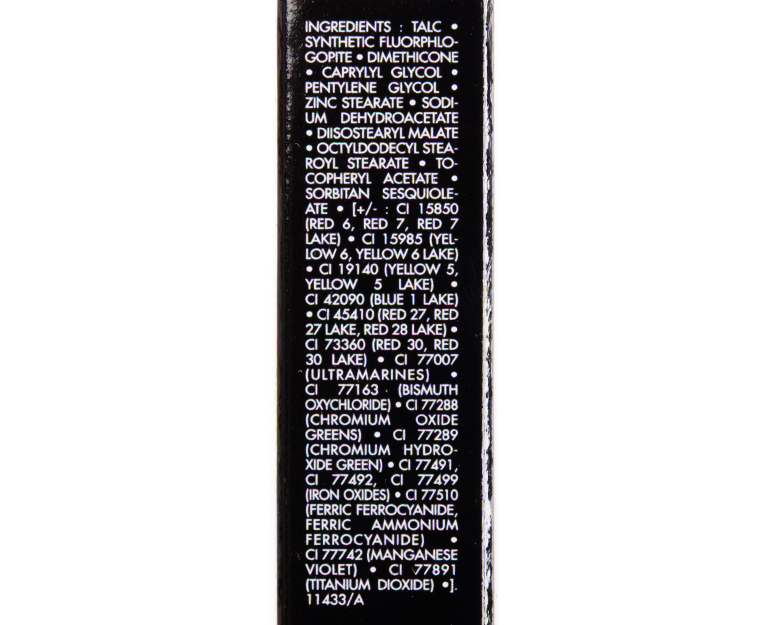
M748 Coral
PPermanent. $17.00.
M402 Mimosa
Make Up For Ever M402 Mimosa Artist Color Shadow ($17.00 for 0.08 oz.) is a vibrant, medium yellow with warm undertones and a matte finish. It was richly pigmented with a smooth, silky consistency that wasn’t too powdery nor was it too firmly pressed in the pan. The eyeshadow applied well to bare skin without losing its intensity, but it was easy to blend out as well. It lasted for nine and a half hours on me.
The previous version was a satin, so it had some shimmer, and it was also lighter and a bit brighter(see side-by-side comparison).
FURTHER READING: Formula Overview for details on general performance and characteristics (like scent).
Top Dupes
- Coloured Raine Sunset (PiP, ) is lighter (95% similar).
- Anastasia Phresh (LE, $12.00) is darker (95% similar).
- ColourPop Abstract (LE, $4.50) is darker, warmer (95% similar).
- ColourPop Mischief (PiP, $4.50) is darker (95% similar).
- Huda Beauty Coral #7 (PiP, ) is more muted (95% similar).
- ColourPop West Coast (Malibu Barbie) (LE, $4.50) is darker (95% similar).
- ColourPop Cleo Amore (LE, $4.50) is darker (95% similar).
- Huda Beauty Tiger #1 (LE, ) is lighter (95% similar).
- Viseart Bright Editorial #7 (PiP, ) is more shimmery (95% similar).
- ColourPop Think Think Think (LE, $4.50) is darker (95% similar).
Formula Overview
$17.00/0.08 oz. - $212.50 Per Ounce
The original Artist Shadow formula had a creamier, slightly softer, and thicker feel for finishes like Metallic, Iridescent, and Satin, while I felt the original Diamond finish was denser/thicker (heavier almost) and the Matte finish was more powdery but similar in softness and pigmentation (I did not find the original Mattes to be ultra pigmented across the board--semi-opaque to opaque, buildable, which you can see in my original swatches here). By and large, I found the formula to be easy to work with and did not have to spend a lot of time blending or fussing with the shades on the lid.
The new Matte formula has a smoother consistency that has more slip to the touch with less powderiness in the pan, but the pigmentation did seem slightly weaker on average compared to the original formula. The pigmentation of the new Matte formula was still semi-opaque to opaque and buildable but I felt like there were just more shades that were closer to semi-opaque than to opaque.
However, shades like M402 Mimosa showed improvement, as it used to be a Satin (see here) and not as easy to work with due to the denser texture. A lot of the shades were similar in color between the formulas, but there were a few that were not (M546 Dark Purple Taupe was a shade with more significant changes; the new version is warmer and lighter).
Overall, I did not have any issues applying most of the matte shades to the lid, blending them out, or building up coverage. They lasted between nine and ten hours on me, which was actually a bit longer (on average) compared to the original formula, where the mattes tended to wear between seven and eight hours on me (without primer).
The new Satin formula was the most different; it had weaker pigmentation, felt denser and drier with less give and creaminess. In practice, I did not feel like application was harder or noticeably different other than feeling like more of the shades required two layers for more opaque coverage, though some of the more neutral shades were fairly pigmented in a single layer. I also noticed that this particular finish seemed to be the most culled; there weren't that many shades in it, and I wonder if they did not sell well or something about the finish is harder to produce.
There were significant differences in color (and/or undertone) between shades in the new formula and old formula (with the same names) within this finish, too, where most were different rather than only a handful being different. The pigmentation of the new Satin formula was typically semi-opaque and buildable, while they applied evenly, blended out without much effort, and lasted between eight and ten hours (without primer).
The new Iridescent formula was the second most different and more comparable to the Satin finish in terms of overall feel and performance, just with larger shimmer/micro-sparkle. The new formula has a denser consistency (almost "drier" and with less slip) and didn't feel as cream-like, but the powder seemed to pickup better with most brushes and was more consistent in the actual finish--pearly with sparkle--whereas the original formula varied more heavily between pearly and metallic, sparkle and finer shimmer.
There were, however, more substantial color and undertone differences between old and new within this formula, like I saw with the Satin formula. Overall, I did not experience any significant issues applying most of the shades to the lid--they were semi-opaque to opaque, fairly buildable, blendable, and long-wearing (eight to ten hours).
The new Metallic formula was the most consistent between old and new for overall feel, performance, and color. There were, of course, a few shades that seemed lighter/darker, cooler/warmer compared to the previous versions, and all those notes will be made within the respective shade's review. I think the new Metallic finish has a more flattering look on the lid, as the consistency wasn't quite as thick, which should make it apply and appear smoother on the lid for more people.
There were several shades that seemed slightly deeper or less reflective, while others were as reflective as past versions. The majority of the shades of this finish were very pigmented with a moderately dense, lightly creamy texture that blended out well on the lid and wore between nine and ten hours on me.
The new Diamond finish was noticeably less dense/thick, particularly on the lid, which did make it easier to spread across a larger area and easier to pickup with more types of brushes. I was worried that there would be more fallout, but I haven't noticeable much fallout with the new Diamond shades over the eight to ten hours they last for.
Most of them had good pigmentation, though there were a few that were weaker (medium to semi-opaque coverage); a shade like D410 Gold Nugget was a weaker shade before and still is while D326 Lagoon Blue is significantly less pigmented in the new formula.
As I typically do with new eyeshadow formulas, I tested a few shades from each finish over various primers, as I like to see how new formulas interact with different types of primers and if there are any unexpected consequences of using primers (I felt that some of the more silicone-heavy Artist Shadows from before actually applied better without primer).
I didn't notice any ill effects of using primers like Smashbox 24-Hour, Marc Jacobs Coconut Eye Primer, Too Faced Shadow Insurance, or Urban Decay Primer Potion. They all seemed to just help with wear, and with some of the shades that felt drier or had weaker pigmentation, the use of primer seemed to improve initial coverage levels, too.
Browse all of our Make Up For Ever Artist Color Shadow swatches.
Ingredients
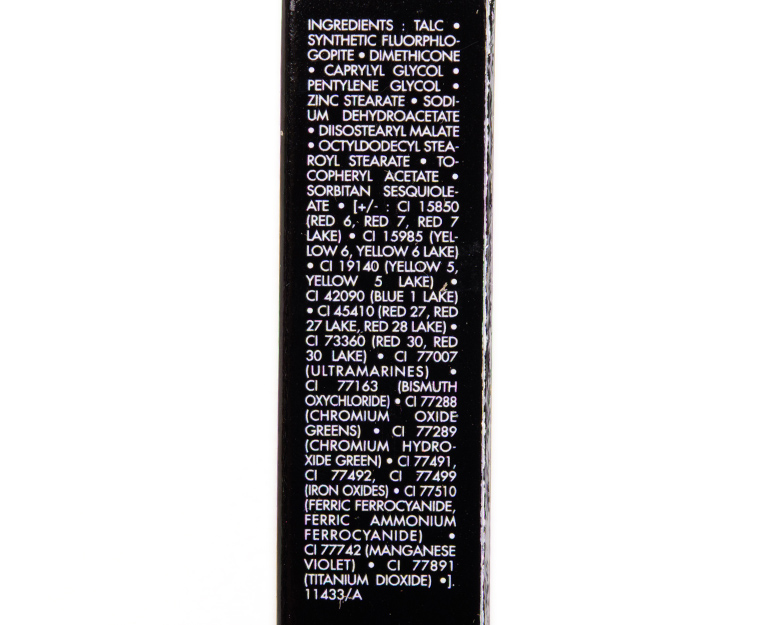
M402 Mimosa
PPermanent. $17.00.
M532 Sugar Coated Candy
Make Up For Ever M532 Sugar Coated Candy Artist Color Shadow ($17.00 for 0.08 oz.) is a light, pinky beige with a matte finish and neutral undertones. The consistency was velvety with just a touch of powderiness in the pan, but it was very smooth and blendable on the lid. It had good pigmentation that actually translated onto the skin (could definitely see that it lightened underneath my brow bone). It wore well for nine hours on me before fading.
(see side-by-side comparison).
FURTHER READING: Formula Overview for details on general performance and characteristics (like scent).
Top Dupes
- Natasha Denona Malia (LE, ) is darker, warmer (95% similar).
- Makeup Geek Baby Face (DC, $6.00) is darker (95% similar).
- Bobbi Brown Ivory (PiP, $22.00) is lighter (95% similar).
- Too Faced Cream Colored Ponies (LE, $16.00) is cooler (95% similar).
- ColourPop Glow (PiP, $6.00) is lighter (95% similar).
- Makeup Atelier Natural Chestnut #1 (P, ) is lighter (95% similar).
- Urban Decay Enigma (LE, $19.00) is lighter (95% similar).
- Make Up For Ever M532 Sugar Coated Candy (DC, $21.00) is warmer (95% similar).
- Tarte Full Moon (LE, ) is lighter (95% similar).
- Too Faced Snow Angel (LE, $16.00) is lighter (95% similar).
Formula Overview
$17.00/0.08 oz. - $212.50 Per Ounce
The original Artist Shadow formula had a creamier, slightly softer, and thicker feel for finishes like Metallic, Iridescent, and Satin, while I felt the original Diamond finish was denser/thicker (heavier almost) and the Matte finish was more powdery but similar in softness and pigmentation (I did not find the original Mattes to be ultra pigmented across the board--semi-opaque to opaque, buildable, which you can see in my original swatches here). By and large, I found the formula to be easy to work with and did not have to spend a lot of time blending or fussing with the shades on the lid.
The new Matte formula has a smoother consistency that has more slip to the touch with less powderiness in the pan, but the pigmentation did seem slightly weaker on average compared to the original formula. The pigmentation of the new Matte formula was still semi-opaque to opaque and buildable but I felt like there were just more shades that were closer to semi-opaque than to opaque.
However, shades like M402 Mimosa showed improvement, as it used to be a Satin (see here) and not as easy to work with due to the denser texture. A lot of the shades were similar in color between the formulas, but there were a few that were not (M546 Dark Purple Taupe was a shade with more significant changes; the new version is warmer and lighter).
Overall, I did not have any issues applying most of the matte shades to the lid, blending them out, or building up coverage. They lasted between nine and ten hours on me, which was actually a bit longer (on average) compared to the original formula, where the mattes tended to wear between seven and eight hours on me (without primer).
The new Satin formula was the most different; it had weaker pigmentation, felt denser and drier with less give and creaminess. In practice, I did not feel like application was harder or noticeably different other than feeling like more of the shades required two layers for more opaque coverage, though some of the more neutral shades were fairly pigmented in a single layer. I also noticed that this particular finish seemed to be the most culled; there weren't that many shades in it, and I wonder if they did not sell well or something about the finish is harder to produce.
There were significant differences in color (and/or undertone) between shades in the new formula and old formula (with the same names) within this finish, too, where most were different rather than only a handful being different. The pigmentation of the new Satin formula was typically semi-opaque and buildable, while they applied evenly, blended out without much effort, and lasted between eight and ten hours (without primer).
The new Iridescent formula was the second most different and more comparable to the Satin finish in terms of overall feel and performance, just with larger shimmer/micro-sparkle. The new formula has a denser consistency (almost "drier" and with less slip) and didn't feel as cream-like, but the powder seemed to pickup better with most brushes and was more consistent in the actual finish--pearly with sparkle--whereas the original formula varied more heavily between pearly and metallic, sparkle and finer shimmer.
There were, however, more substantial color and undertone differences between old and new within this formula, like I saw with the Satin formula. Overall, I did not experience any significant issues applying most of the shades to the lid--they were semi-opaque to opaque, fairly buildable, blendable, and long-wearing (eight to ten hours).
The new Metallic formula was the most consistent between old and new for overall feel, performance, and color. There were, of course, a few shades that seemed lighter/darker, cooler/warmer compared to the previous versions, and all those notes will be made within the respective shade's review. I think the new Metallic finish has a more flattering look on the lid, as the consistency wasn't quite as thick, which should make it apply and appear smoother on the lid for more people.
There were several shades that seemed slightly deeper or less reflective, while others were as reflective as past versions. The majority of the shades of this finish were very pigmented with a moderately dense, lightly creamy texture that blended out well on the lid and wore between nine and ten hours on me.
The new Diamond finish was noticeably less dense/thick, particularly on the lid, which did make it easier to spread across a larger area and easier to pickup with more types of brushes. I was worried that there would be more fallout, but I haven't noticeable much fallout with the new Diamond shades over the eight to ten hours they last for.
Most of them had good pigmentation, though there were a few that were weaker (medium to semi-opaque coverage); a shade like D410 Gold Nugget was a weaker shade before and still is while D326 Lagoon Blue is significantly less pigmented in the new formula.
As I typically do with new eyeshadow formulas, I tested a few shades from each finish over various primers, as I like to see how new formulas interact with different types of primers and if there are any unexpected consequences of using primers (I felt that some of the more silicone-heavy Artist Shadows from before actually applied better without primer).
I didn't notice any ill effects of using primers like Smashbox 24-Hour, Marc Jacobs Coconut Eye Primer, Too Faced Shadow Insurance, or Urban Decay Primer Potion. They all seemed to just help with wear, and with some of the shades that felt drier or had weaker pigmentation, the use of primer seemed to improve initial coverage levels, too.
Browse all of our Make Up For Ever Artist Color Shadow swatches.
Ingredients
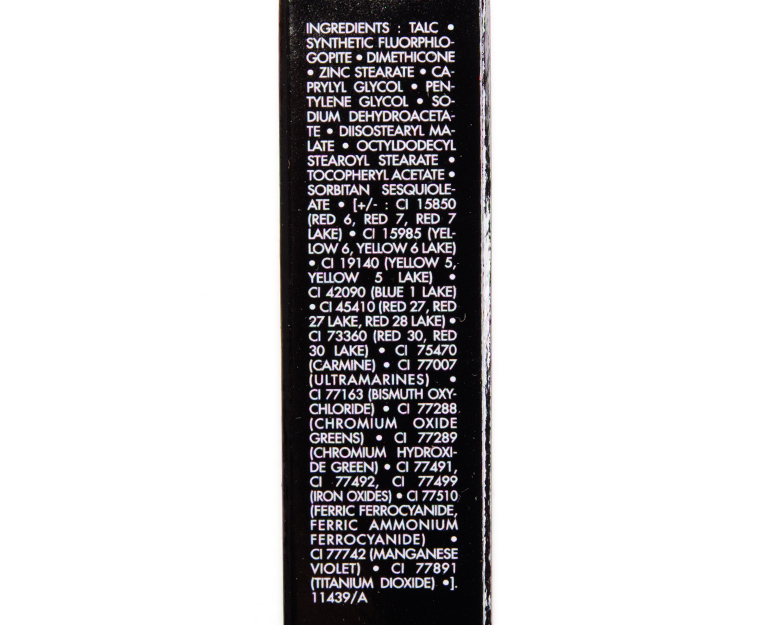


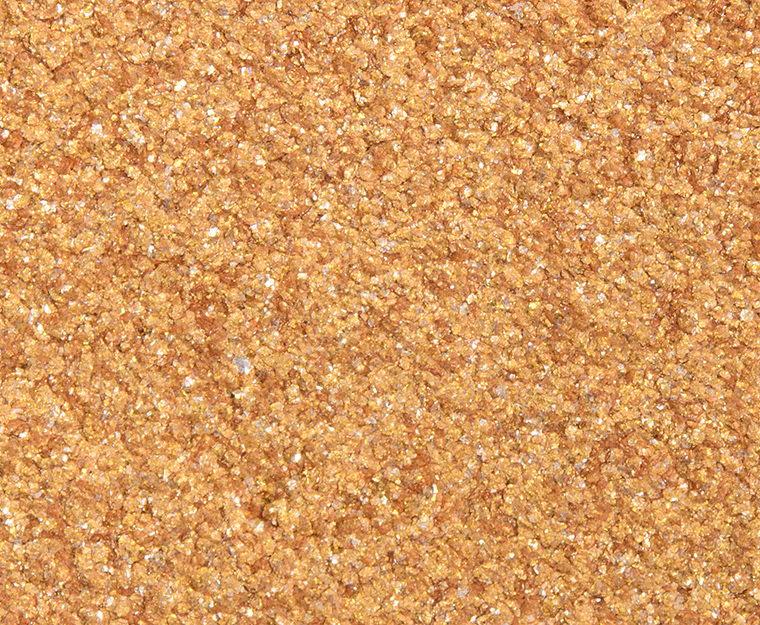
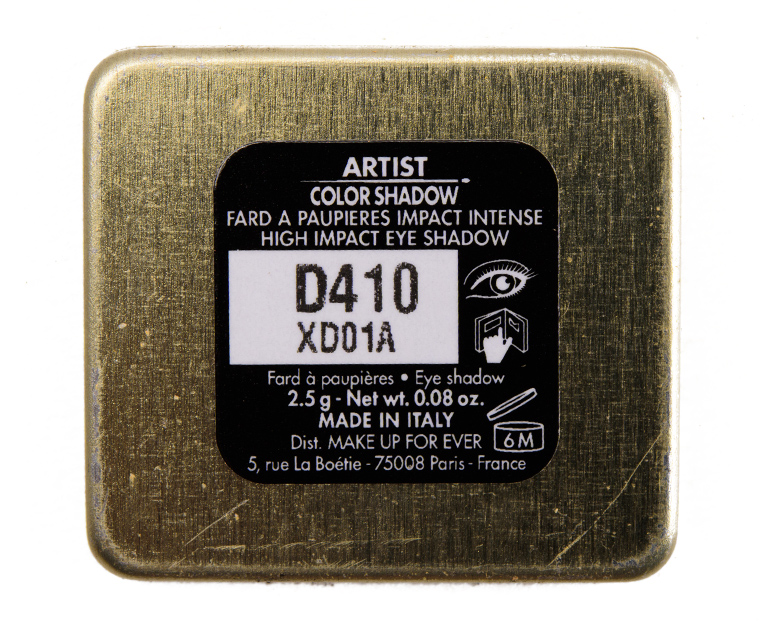
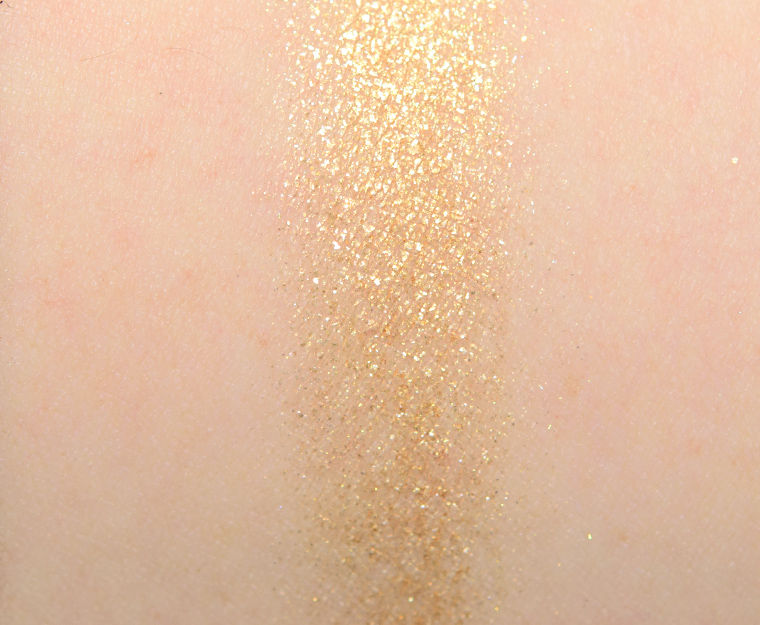
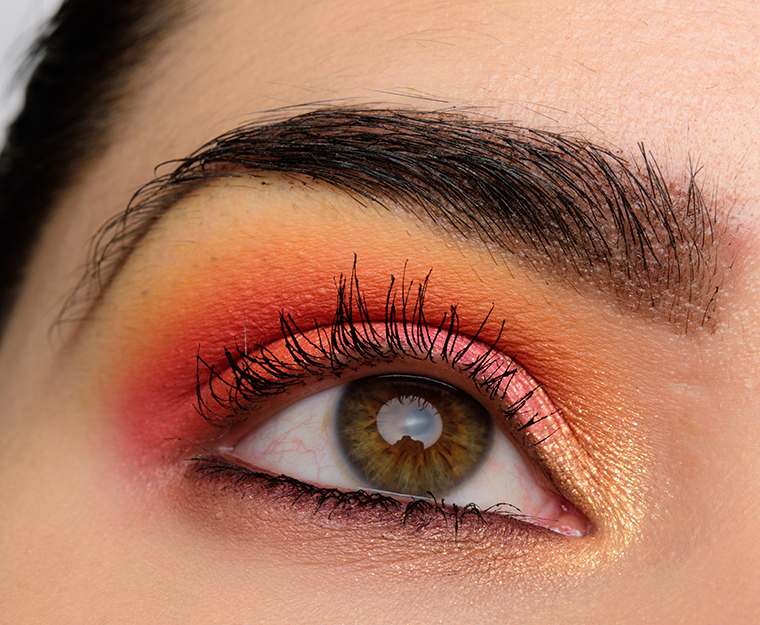
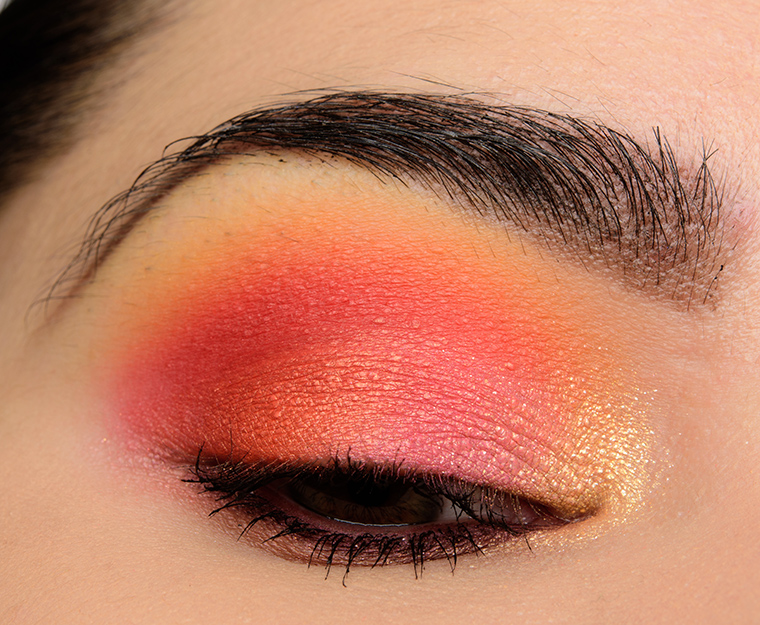



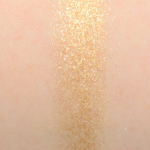
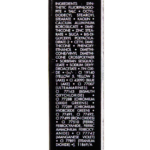




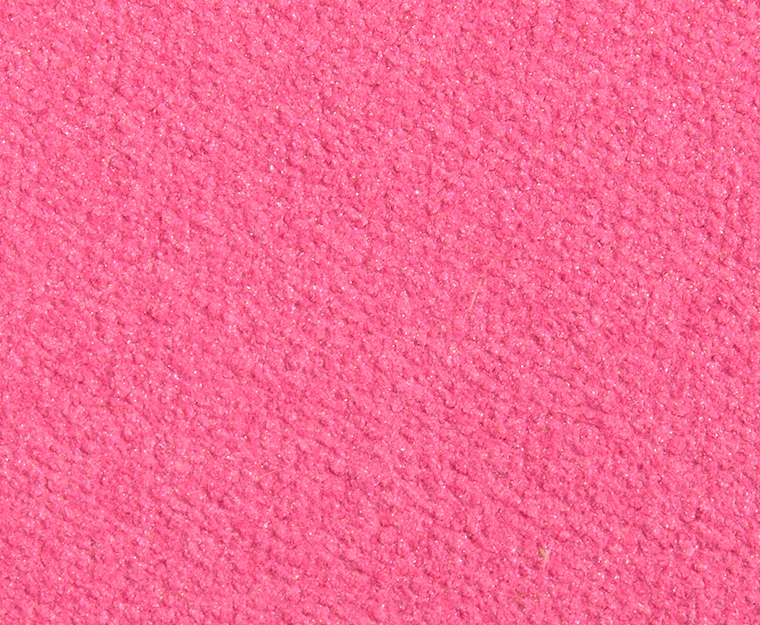
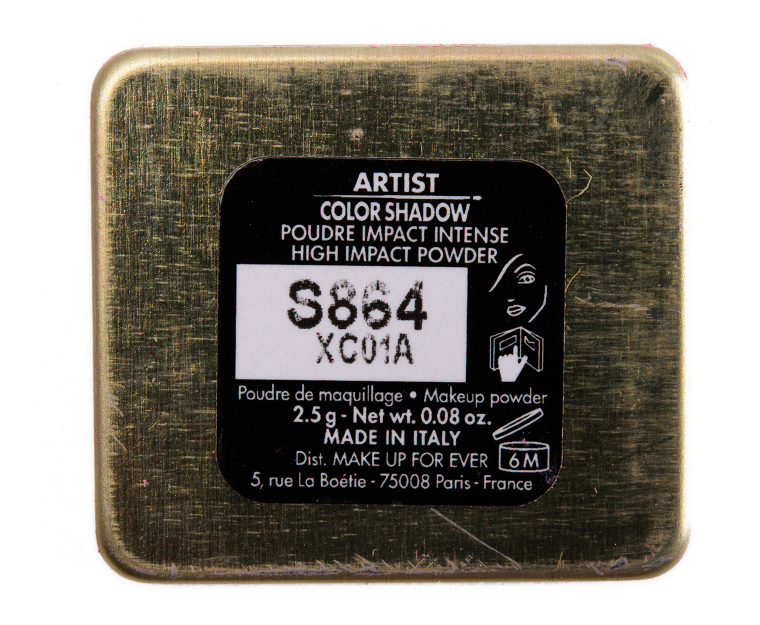
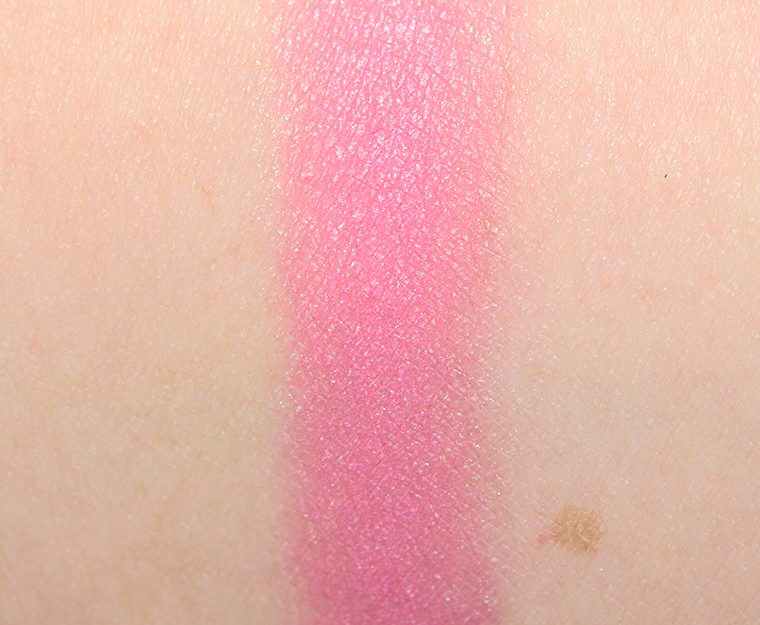






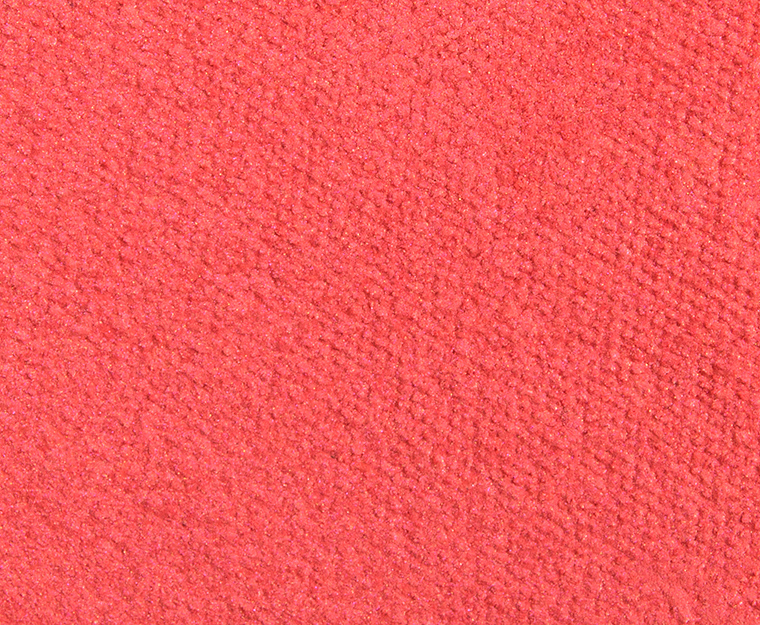
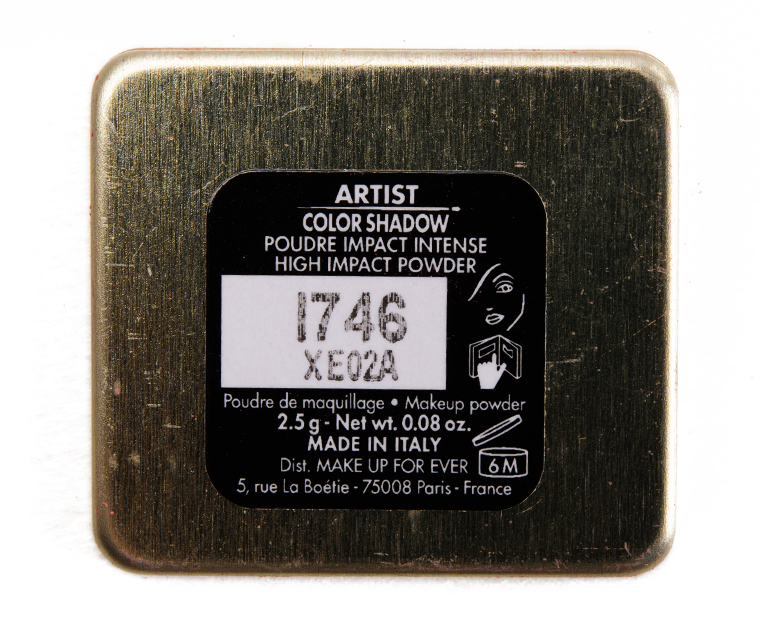
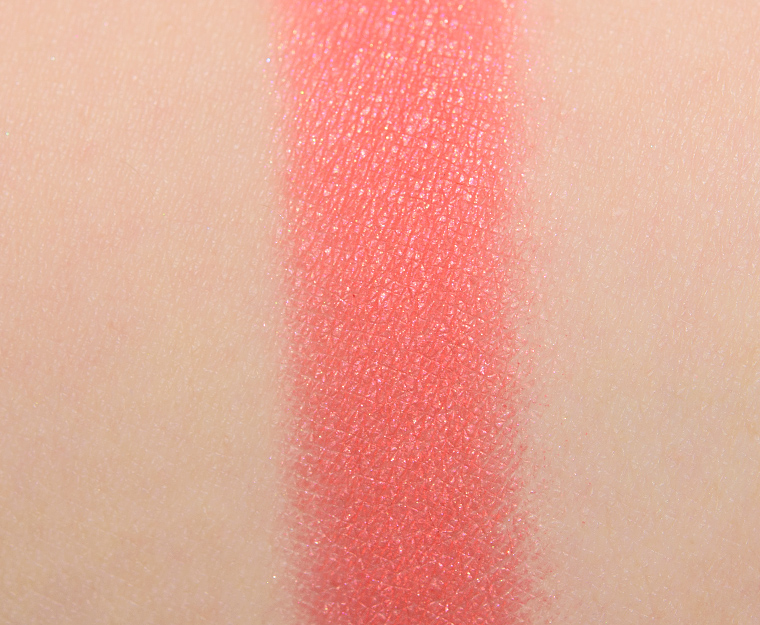






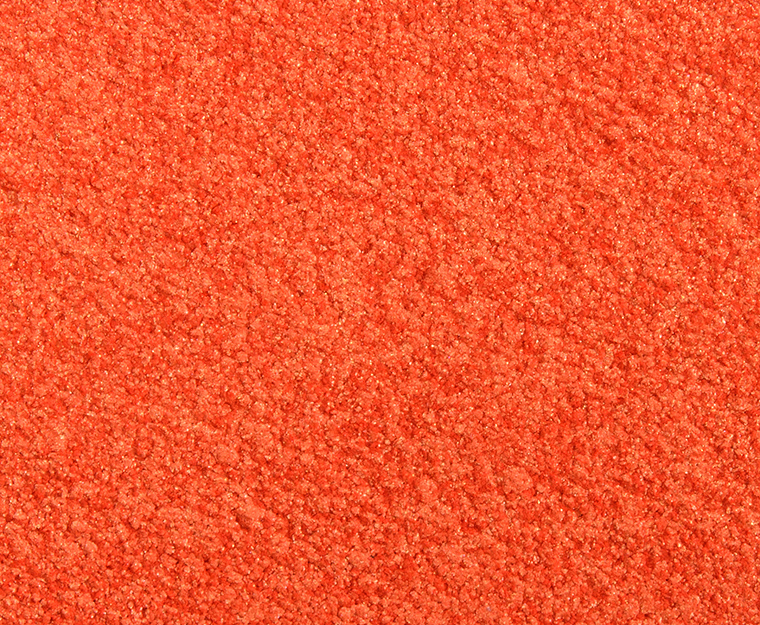
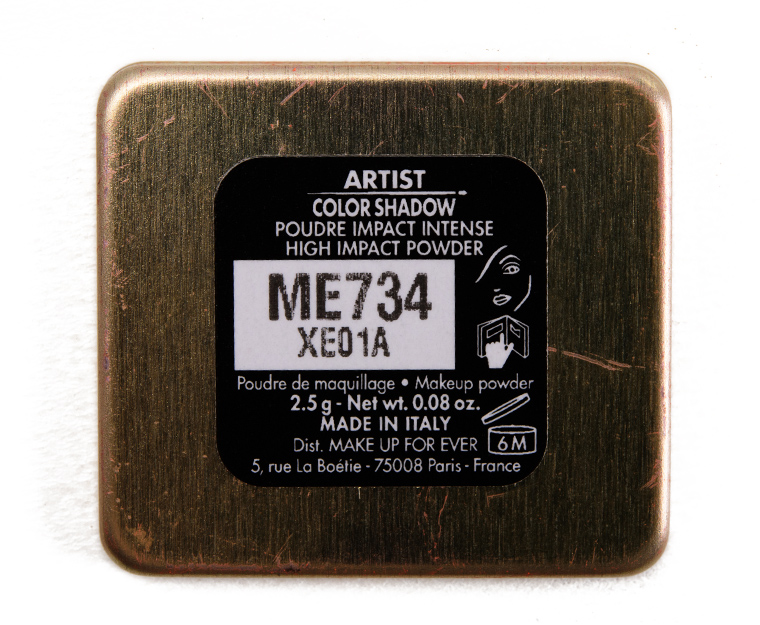
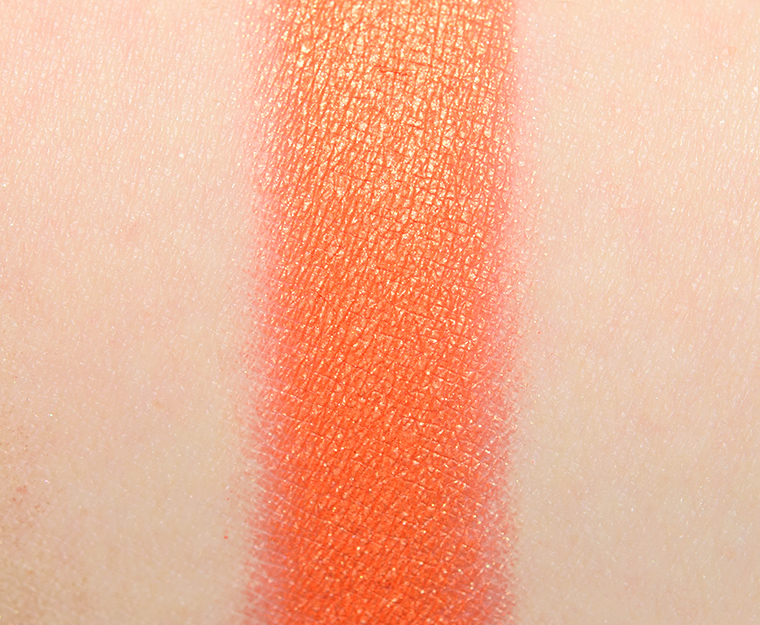






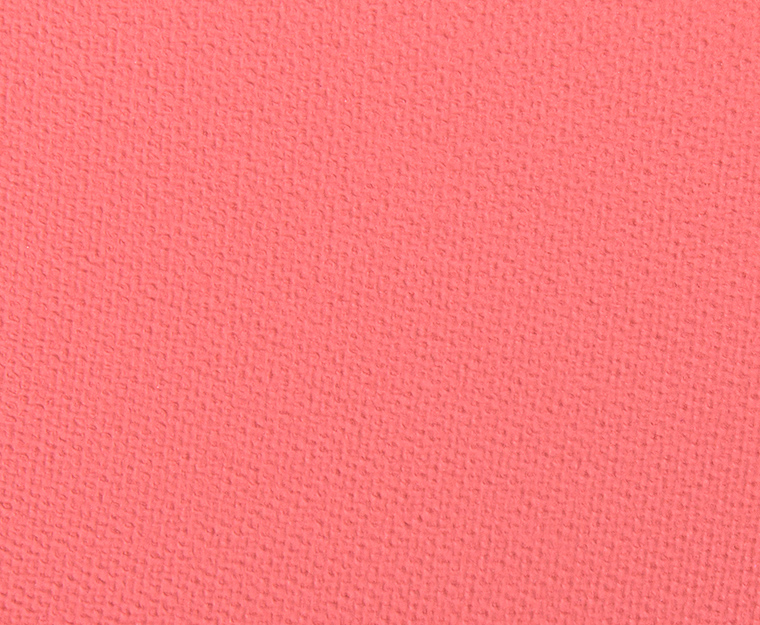
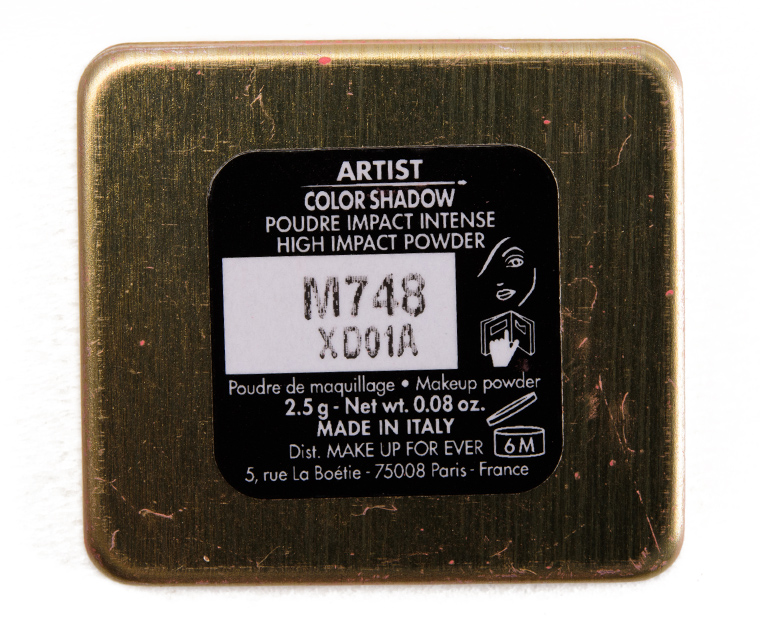
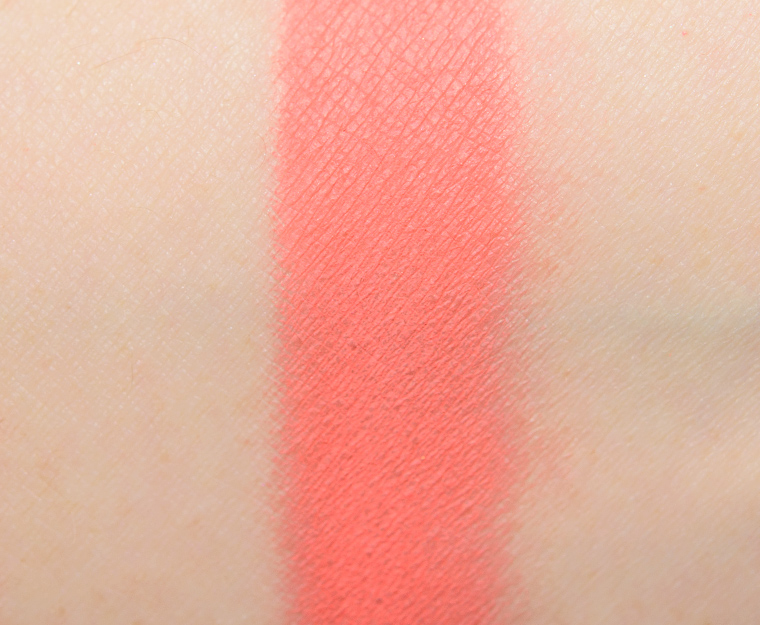






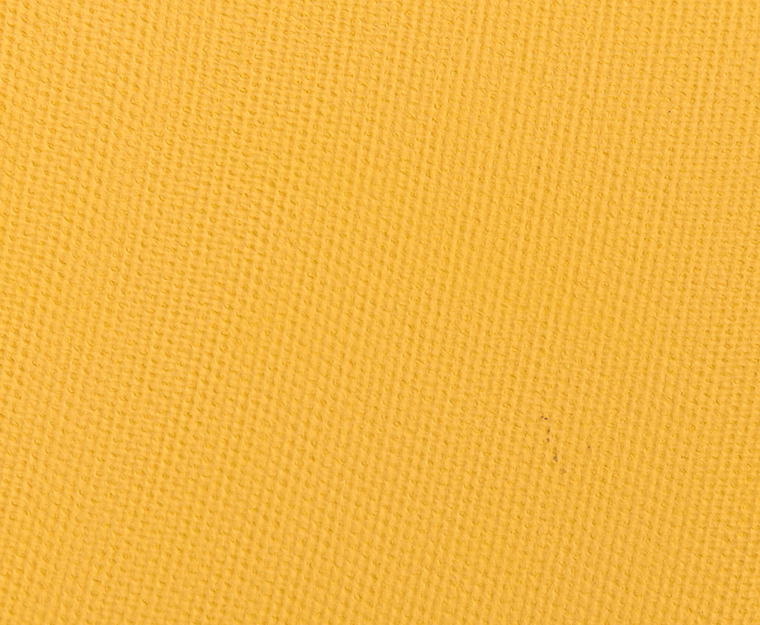
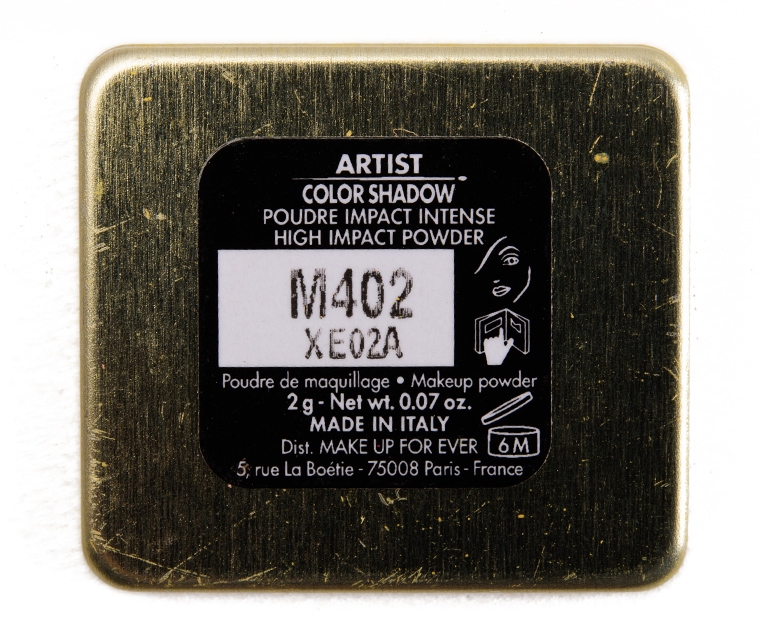
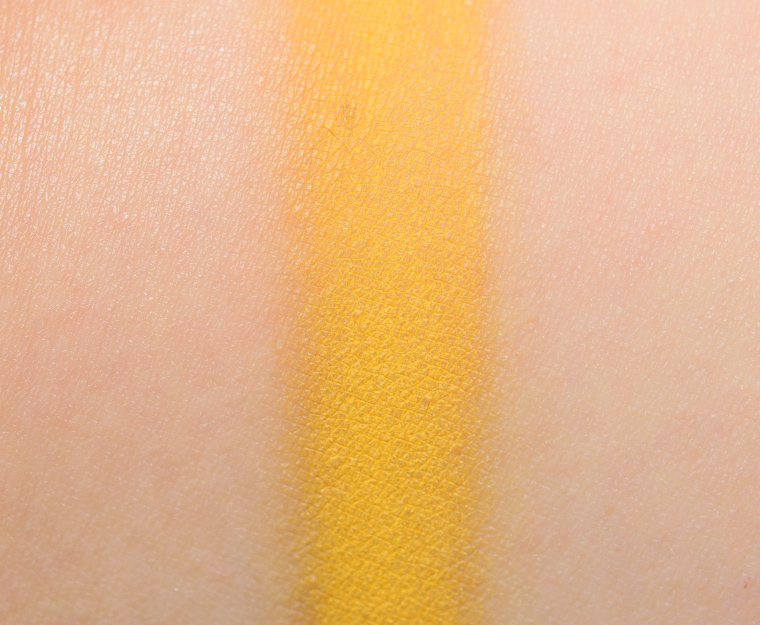



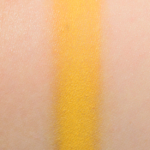


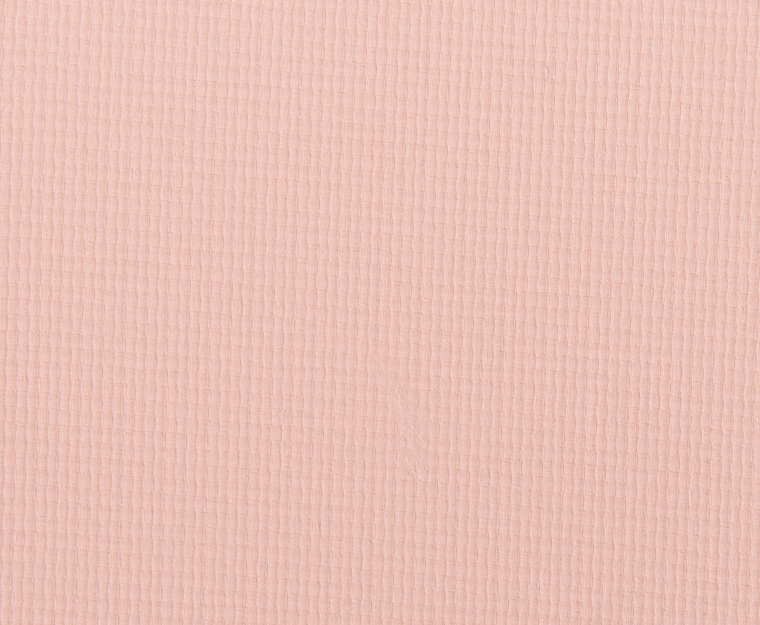
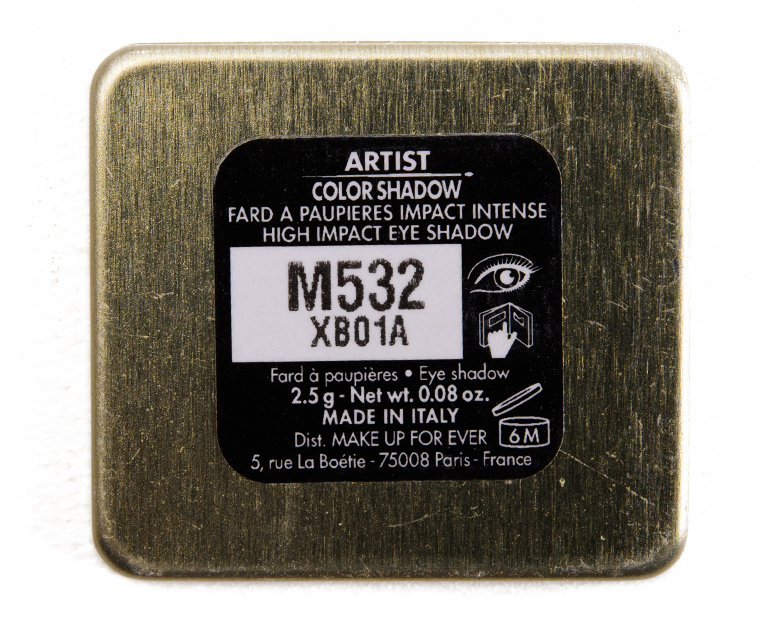
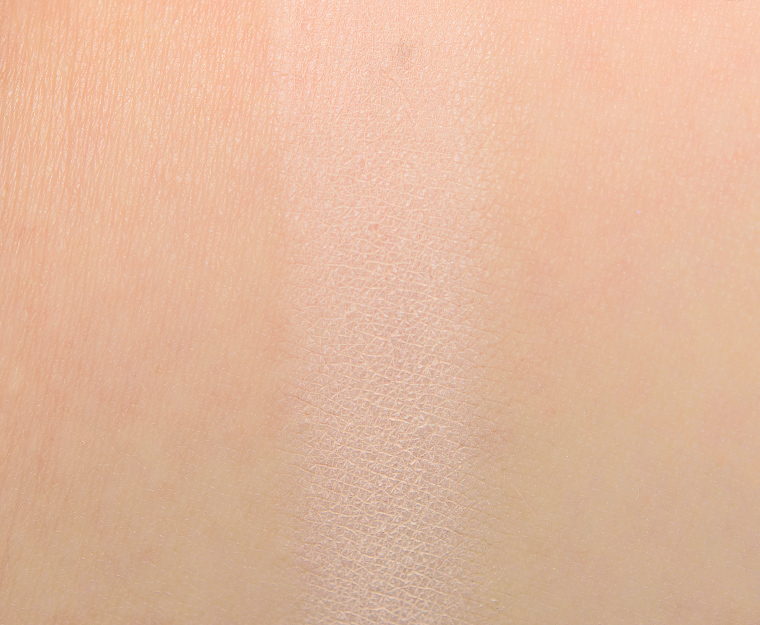






I love the pastel eye shadow look. I haven’t picked up any of the new formula ABH shadows. I think I will just be happy with the collection of old formula shadows that I already own. The gold is more than just a little bit bad!!
I’m about to be so overdramatic but it disgusts me that MUFE made an F gold. They had a near perfect formula and who messes up gold? The most mundane of private labels can make nice golds because that’s one of the easiest shadow colors to produce. It’s not like making a red or purple matte, it’s easy. To go from what they had previously to this and not cut the price even farther down than where it is is absurd. Yes the old ones were expensive but easy to save on and worth it. Sure these cost less but not enough less to be apparently made from cutting major corners. I wouldn’t buy that gold for MAC/small indie pricing. Yeesh that’s bad.
Oh, I’ve learned about a decade ago that if you really want richly pigmented glitter bomb shadows then you need to buy indie. Sugarpill’s Goldilux comes to mind. Fyrinnae’s Arcane Magic line as well.
Goldilux is my all time favorite gold and I love all things Fyrinnae. Those are lovely. But really any brand should be able to kill a shiny gold, period. I think there’s great sparkling metallics all over the market which makes a dud gold from a brand like MUFE that’s previously made many wonderful metallic shades is ridiculous.
Also in case this was unclear my comparison to indie was on pricing potential and nothing related to quality. There Are excellent golds from brands across pricepoints and availability from drugstore, indie, mid end, luxe, niche, etc. This is too expensive.
Well said.
Thanks much for the kind words, AB.
That eye look though! ?
And yet, I only see myself possibly getting Mimosa and Tangerine. Those 2 really stand out to me as being different enough to even think about.
I never thought I’d see an F grade on a MUFE shadow. I hate that they messed up the best shadows on the market with this reformulation.
I know! So frustrating. This gold would be bad for a kid’s play palette. For a MUFE release (an actual fully developed launch, replaced a line, went through all planning and peformance tests, etc) to actually even get to quality control let alone passing it…horrid misfire. Ugh.
How does a brand like MUFE mess up a gold?
Did the old eye shadow formulation have any bad grades? I seem to remember them all being really good. And now they mess up a gold! Why, MUFE, WHY?!?!?!?!
I did not review all shades – I’m so sorry!